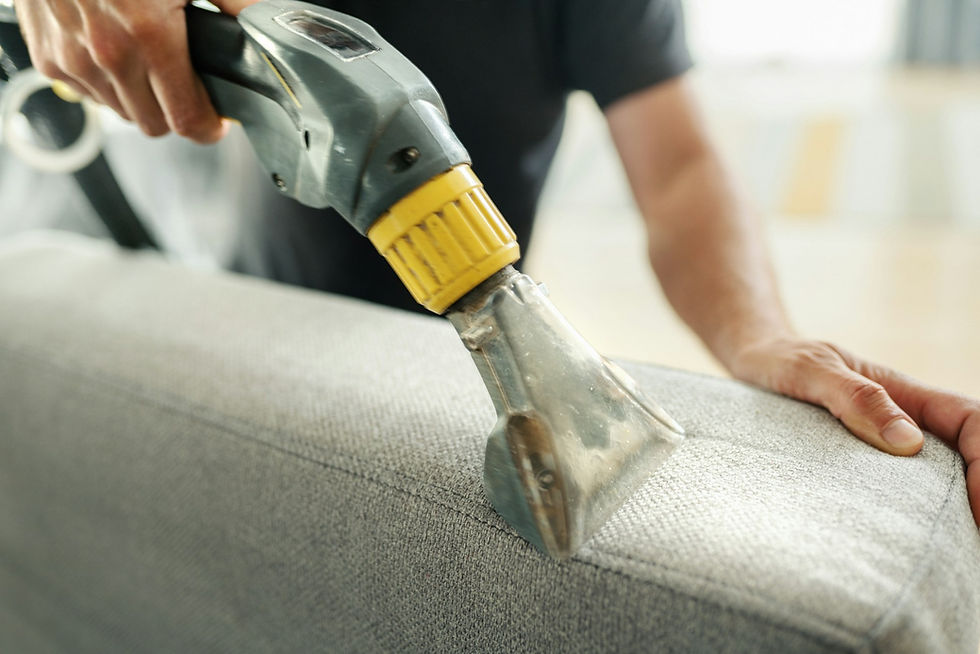Best Practices for Keeping Tile and Grout Looking Like New
- mysteamvac
- Aug 27, 2024
- 4 min read
Keeping tile and grout clean can feel like a big job, but with the right steps, it doesn’t have to be. Clean tile and grout make kitchens, bathrooms, and floors look nicer and last longer. If you know what to do every day, weekly, and when there are tough stains, you can keep your tile and grout looking fresh and new.
Grout, the material between your tiles, is especially tricky. It can get dirty fast and can be hard to clean. Some easy tricks can help keep it looking nice. It's important to know what cleaners to use and which ones to stay away from, so you don’t damage your tiles or grout.
High-traffic areas, like hallways and entryways, need special care to keep them looking good. There are good long-term care strategies to help keep these busy spots clean. Avoiding common cleaning mistakes can also make a big difference. For example, using the wrong kind of brush or cleaner can scratch your tiles or damage your grout. Knowing the right practices will save you time and effort.
Daily Cleaning Routines to Maintain Tile and Grout
Keeping your tile and grout clean starts with simple daily routines. Every day, try to sweep or vacuum your tile floors to get rid of dirt and debris. This prevents scratches and keeps dirt from settling into the grout lines. In the kitchen and bathroom, a quick sweep before bed helps keep everything looking nice.
After sweeping, use a damp mop with warm water to clean the tiles. For bathroom tiles, consider wiping down shower walls with a squeegee after each use. This stops water spots and soap scum from building up. For kitchen tiles, wipe up any spills as soon as they happen to prevent stains. Using a mild cleaner that’s safe for tile can help keep everything fresh without damaging the surface.
DIY Remedies for Tackling Stubborn Grout Stains
Sometimes, grout gets stained no matter how careful you are. When this happens, there are some easy DIY remedies to try. One popular method is using a mixture of baking soda and water. Make a paste, apply it to the stained grout, and let it sit for a few minutes before scrubbing with an old toothbrush. This helps lift the stain out of the grout.
For tougher stains, you can try mixing equal parts of vinegar and water in a spray bottle. Spray the solution on the stained grout and let it sit for five minutes. Then, scrub with a brush and rinse with water. Another option is hydrogen peroxide, which works well for stains caused by mold or mildew. Apply it directly to the grout, wait a few minutes, and scrub away. These DIY methods are effective and use items you probably already have at home.
Long-Term Care Strategies for High-Traffic Areas
High-traffic areas like hallways and kitchens require extra attention to keep tiles and grout looking new. One effective strategy is to use area rugs or mats in these spaces. These can significantly reduce the amount of dirt and debris that gets tracked onto the tile and grout. Choose rugs with non-slip backs to ensure they stay in place and don’t become a tripping hazard.
Another essential practice is to seal your grout regularly. Grout sealant acts as a barrier to prevent stains and water from penetrating the grout lines. Aim to reseal your grout every 6 to 12 months, especially in high-traffic areas. This helps maintain the grout’s appearance and prevents it from becoming discolored or damaged over time. Regular mopping with a pH-neutral cleaner is also crucial to remove surface dirt without harming the tile or grout.
Key Mistakes to Avoid When Cleaning Tile and Grout
Avoiding common cleaning mistakes can make a big difference in maintaining your tile and grout. One major mistake is using abrasive cleaners or tools. These can scratch the tile surface and wear down the grout, causing more harm than good. Always choose soft brushes or sponges designed for tile cleaning. Hard brushes or scrubbing pads can cause damage that is difficult to repair.
Another frequent error is neglecting to dry the floor after cleaning. Leaving excess water on the tile and grout can lead to mold and mildew growth, particularly in areas with poor ventilation. Make sure to have a dry mop or towels on hand to thoroughly dry the surface after each cleaning session. Additionally, using too much cleaner can leave a residue that attracts dirt, so always follow the recommended amounts on the product label.
Final Thoughts
Maintaining the beauty of your tile and grout doesn’t have to be complicated. By incorporating daily cleaning routines, using DIY remedies for tough stains, and applying long-term care strategies for high-traffic areas, you can keep your tile and grout looking new for years to come. Avoiding common cleaning mistakes ensures you won’t unintentionally damage your surfaces.
Remember that regular care and attention make a significant difference. Taking these steps not only enhances the appearance of your home but also prolongs the life of your flooring. By keeping up with these best practices, you’re investing in the longevity and beauty of your living spaces.
If you find that your tile and grout need professional attention, consider reaching out to Steam Vac Carpet Cleaning. We offer expert tile cleaning services to help you achieve and maintain beautifully clean floors. Contact Steam Vac Carpet Cleaning today to schedule your professional cleaning and give your home the care it deserves.




Comments